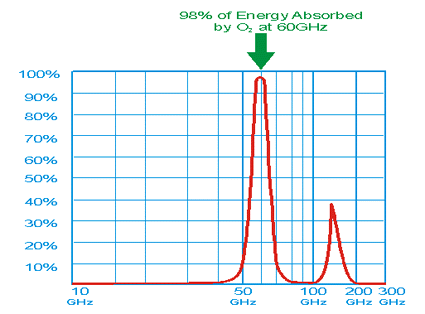
Factually inaccurate: COVID-19 is a respiratory infectious disease caused by the virus SARS-CoV-2, not 5G technology.
Inadequate support: No evidence indicates that current exposure to electromagnetic fields from wireless technology is harmful to people.

FULL CLAIM: 5G at 60 GHz “stops the human body and blood absorbing oxygen. They will just collapse in the street”; “Those symptoms, that outcome, is so exactly what this doctor in New York is describing” in COVID-19 cases
REVIEW
In March 2022, a Facebook reel originating from TikTok that featured conspiracy theorist and former football player David Icke went viral. In it, Icke wrongly claimed that the 60 GHz frequency of 5G “stops the human body and blood absorbing oxygen”, an outcome compatible with COVID-19 symptoms. The video received more than 455,000 views on Facebook and 345,000 on TikTok. Other iterations of the same claim also appeared on TikTok.
The Tiktok video clip is part of an interview with Icke on the U.K. online channel London Real on 6 April 2020, in which Icke made several false claims linking 5G technology and the COVID-19 pandemic. The interview was live streamed on YouTube receiving millions of views at the time.
Since the 1990s, Icke has been well-known for promoting conspiracy theories, of which the London Real interview is yet another example. Following Icke’s interview, YouTube tightened its guidelines on COVID-19 misinformation to include “conspiracy theories which claim that the symptoms are caused by 5G”. In May 2020, Facebook and YouTube removed Icke’s accounts for violating their policies on harmful misinformation, with Twitter following suit in November 2020.
The specific claim that 5G radiation blocks oxygen uptake by the blood and the lungs has no scientific basis and is incorrect, as this review will explain. In fact, the claim has been debunked before by fact-checking organizations.
5G neither absorbs oxygen from the environment nor makes oxygen unavailable to the human body
Wireless cellular technologies transfer data from one point to another using radio waves, which are part of the electromagnetic spectrum. The term 5G refers to the fifth generation of cellular networks, a technology that uses higher frequency waves than earlier networks to provide faster and higher quality communication. However, 5G will use different frequency bands, starting with low frequencies similar to the ones that were already in use (hundreds of MHz up to a few GHz), to later extend into higher frequencies called millimeter waves.
Although Icke didn’t clearly explain how 5G is supposed to block oxygen uptake, a graph that appeared in the video at that point of the interview (Figure 1) gives us a clue. This graph shows the percentage of energy that oxygen molecules absorb from electromagnetic waves depending on their frequency.
In the case of 60 GHz waves, this percentage is 98%. One possible interpretation of Icke’s claim referring to this graph is that electromagnetic waves absorb 98% of the oxygen from the environment, making it unavailable to people. However, this interpretation is incorrect.

Figure 1. Absorption of millimeter electromagnetic wave energy by dry atmospheric oxygen, presented as a percentage of absorption per kilometer. At the wave frequency of 60 GHz, atmospheric oxygen absorbs 98% percent of the transmitted energy. Source: RF Globalnet.
The graph appears to have come from the website of the technological information platform RF Globalnet, which clearly explains that the graph illustrates a physical phenomenon called attenuation. The term attenuation describes the decrease in signal strength that occurs during transmission from one point to another when the signal interacts with particles and objects in its way. In the case of electromagnetic waves, attenuation results from the interaction with particles in the atmosphere, such as oxygen, that can absorb part of their energy or change its direction.
In other words, 60 GHz waves interact with oxygen in the atmosphere—not in the body, as Icke claimed—but don’t absorb oxygen. On the contrary, the oxygen molecules in the atmosphere absorb the energy from electromagnetic waves, reducing the distance the waves can travel. The attenuation phenomenon makes 60 GHz frequencies unable to cover long distances, which is one of the reasons why 5G uses different ranges of frequencies. Furthermore, countries have started deploying several low- and mid-frequency 5G bands, but not high-frequency bands in the range of 60 GHz. Since this frequency isn’t yet in use, it can’t be responsible for any observed changes in human health so far.
Other related claims shared online are that 5G electromagnetic waves change oxygen molecules or hemoglobin in red blood cells, thus interfering with the body’s ability to absorb oxygen. But neither of these claims are correct.
Electromagnetic waves from 5G are a type of non-ionizing radiation. The U.S. Nuclear Regulatory Commission explains that this type of radiation “deposits energy in the materials through which it passes, but it does not have sufficient energy to break molecular bonds or remove electrons from atoms”.
If the claim were true, we would expect waves of even higher frequencies, such as visible light or ultraviolet (UV) light, to cause similar or more pronounced changes in oxygen molecules. This clearly doesn’t happen. Neither visible light nor UV light, cause people to stop breathing and collapse.
Moreover, Mats-Olof Mattson, professor of cell biology at Strömstad Academy in Sweden, told Health Feedback that the type of electromagnetic waves that 5G uses don’t penetrate the skin:
“For so-called millimeter waves, 30 GHz and higher, this depth is less than 1 mm, and thus practically do not even go beyond the epidermis of the skin. The penetration to blood and thus a direct interaction with hemoglobin within the red blood cells is unrealistic.”
The reason is that electromagnetic waves from 5G are in the low range of electromagnetic frequencies, lower than visible light, and aren’t strong enough to penetrate body tissues (Figure 2).

Figure 2. Frequencies of ionizing and non-ionizing radiation, including 5G, within the electromagnetic spectrum. Source: SCAMP/Imperial College London/EBU.
COVID-19 symptoms are caused by SARS-CoV-2 infection and are unrelated to 5G
Although the specific excerpt in the TikTok video didn’t mention COVID-19, we know from the rest of the interview that the symptoms that Icke discussed are those of COVID-19. Given the fact that 5G doesn’t deplete oxygen and can’t interfere with oxygen transport in the blood, Icke’s attempt to explain the symptoms of COVID-19 based on this mechanism is baseless.
COVID-19 is a respiratory infectious disease that is caused by the SARS-CoV-2 virus. As Health Feedback and several media and fact-checking organizations have explained before, SARS-CoV-2 didn’t arise from 5G, and it also cannot spread through 5G. This is supported by the fact that COVID-19 spread widely in regions and even countries where 5G wasn’t available, such as Brazil, as Health Feedback pointed out in an earlier review.
Current evidence doesn’t show that 5G causes health problems
This article by Full Fact explained how these conspiracy theories linking 5G technology and COVID-19 are rooted in myths and fears that were already widespread before the pandemic. Indeed, the idea that wireless cellular networks in general and 5G in particular are harmful existed long before COVID-19.
Experts have also highlighted that evidence from studies on wireless technologies shows no reason for concern. In an earlier review, Isabelle Lagroye, a researcher on bioelectromagnetism at the Centre National de la Recherche Scientifique (CNRS) in France and member of the International Commission on Non-Ionizing Radiation Protection (ICNIRP), told Health Feedback that there is “no scientific basis for stating that 5G is a threat for health, as long as exposure is kept well below the existing exposure limits”.
In 2020, the ICNIRP released its new Guidelines on Limiting Exposure to Electromagnetic Fields in the range of 100 kHz to 300 GHz. After reviewing all the scientific evidence available, the ICNIRP found no adverse effects on cognition, physiological and hormonal functions, heart, nervous system, immunity, blood, fertility, reproduction, and development, nor in the development of neurodegenerative diseases or cancer. The organization also found no evidence of a mechanism that could lead to adverse health effects in humans.
Few studies have addressed the specific effects of 5G on human health. But as the World Health Organization explains, the higher frequencies used in 5G are less able to penetrate the body than frequencies used in previous cellular network generations, making 5G frequencies even less likely to cause negative effects in humans.


